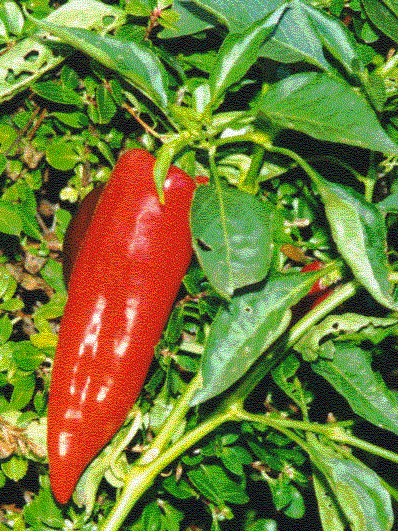 Chilies:
Chilies:
Native to the Americas
Brought back to Europe by Christopher Columbus
Play an important role in cuisines in areas around the world,
including Africa, China, India, Mexico, South America, Spain,
and Thailand-
Over 200 varieties of chilies, 100 of which are indigenous to
Mexico.
Range from very mild to intensely spicy; colors: greens, yellows,
oranges, and reds

One Pot Cooking:
Found across cuisines
Includes all components of a meal in one dish-often starch, protein,
and vegetable, different methods of cooking
Often considered the "peasant" or more common way of
eating
 Chocolate:
Chocolate:
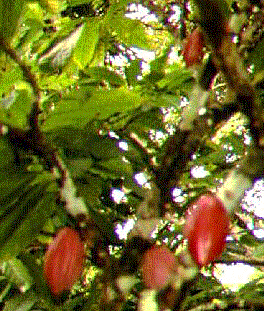 |
| Cacao Plant and Fruit |
The word Chocolate comes from the Aztec word "xocolatl"
meaning "bitter water".
Is the edible product of the tropical cocoa bean, Theobroma cacao
(means "food of the gods").
Cacao played important role in Mayan, Toltec, and Aztec culture-beans
used both as food and form of payment
Some scholars say Columbus brought cacao beans back to Spain,
it wasn't until
Hernan Cortes returned to Spain in 1527 or 1528 with usage tips
from the Aztecs (as in how to mix it with other ingredients to
make a
beverage
that it found any real use in Europe.
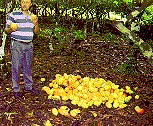 |
|
Ripe Cacoa |
Knowledge remained
in Spain for about 100 years before spreading in Europe; moved
into Africa around 1822-currently the largest cacao producing
countries are in Africa (larger quantities, for industrial uses)
and South America (higher quality) originally consumed in the
form of a beverage; first chocolate "bar" in 1847 in
England
Different types available include: unsweetened, bittersweet,
dark, milk, and white; also cocoa products such as cocoa powder
Corn:
Native to the New. World, corn has long been a staple food in
the Americas-its the only native American cereal grain -originated
in Mexico or Central America, archeological evidence as far back
as 7,000 years ago
Important role in Mayan, Aztec, and Incan cultures-used for religious
ceremonies, as currency, fuel, construction material, jewelry,
food
Columbus brought back reports of it to the Spain, but Hernan
Cortes is credited with actually bringing corn back to Europe;
the Portuguese brought it to Africa in early 16th century
Every part of the plant can be used -the husks for tamales, the
silk for medicinal tea, the kernels for food, and the stalks
for livestock feed.
Also serves as the foundation of many byproducts including bourbon,
corn flour, cornmeal, corn oil, cornstarch, corn syrup, etc.
Lamb:
Sheep have been domesticated for tens of thousands of years lamb
is meat from a sheep less than 1 year old
Important symbolic meaning showing up in Christian, Jewish, and
Muslims traditions more popular in Middle East, North Africa,
and Greece; also India, France, Italy, Spain, England, China,
and New Zealand (the worlds' chief sheep-raising country)
Less popular in US, Latin America, Central and Eastern Europe;
practically unknown in Japan and Southeast Asia
Ginger:
Underground rhizome of attractive flowering plant
Most ginger comes from Jamaica, followed by India, Africa, and
China
Name comes from Sanskrit word for "horn root", clearly
a reference to the appearance of the root -the part we consume
Used heavily in Asian and Indian cuisine's, is fundamental to
Chinese cuisine -known usage for at least 3,000 years
Spanish brought ginger to the West Indies, where is thrives today
(Jamaica) fresh ginger is available in both "young"
and "mature" forms
Also used dried and ground, crystallized, preserved, or pickled
Found in dishes ranging from ginger ale to traditional gingerbread
to savory dishes in different cultures
Pasta --Noodles:
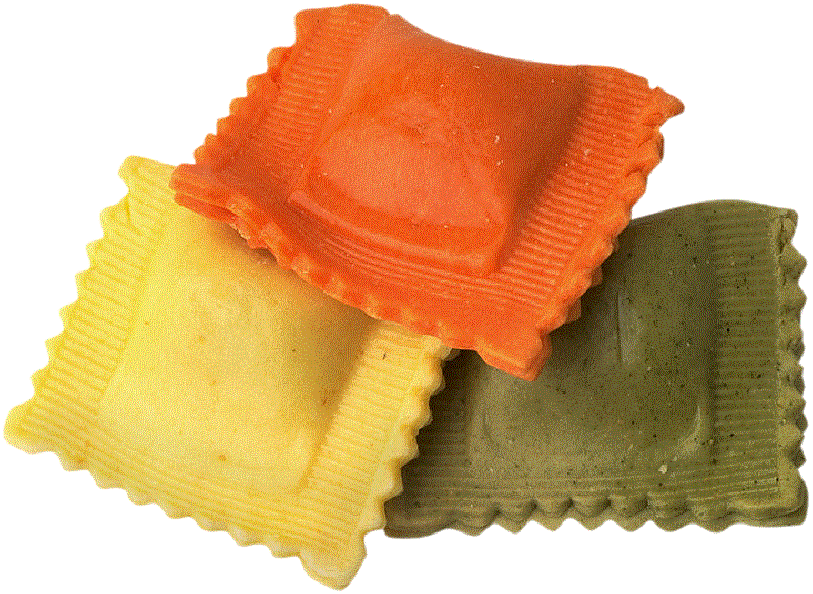 Almost every country
has some form of pasta
Almost every country
has some form of pasta
Marco Polo's claim of bringing the knowledge of noodles back
from Asia to Italy is probably just a good story -the knowledge
existed independently in both places long before Polo's journeys
Pasta: Filled: Also found in many cultures --includes Polish
pierogi, Chinese dimsum, Italian ravioli etc.
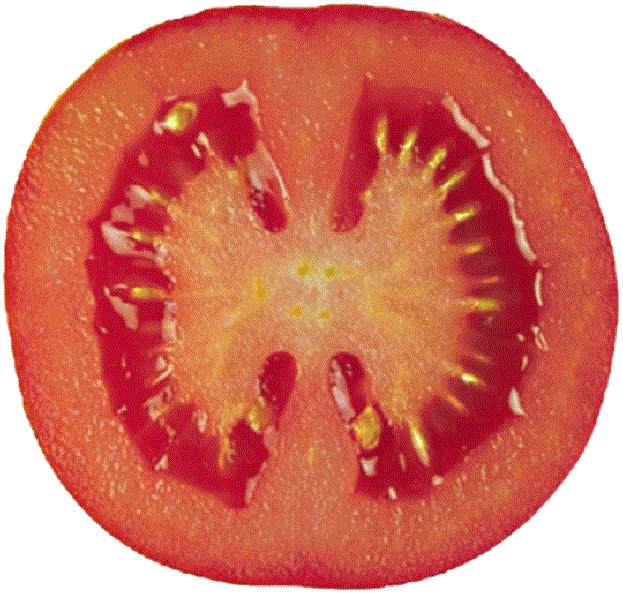
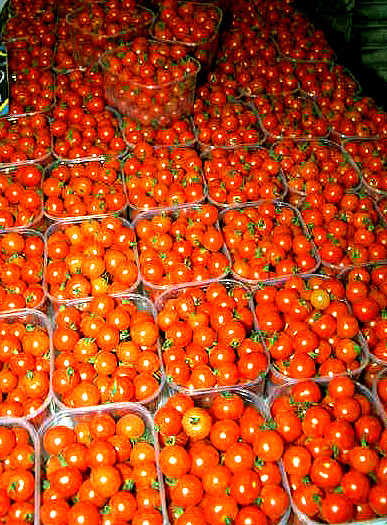 Tomatoes:
Tomatoes:
Member of the nightshade family of plants
Native to South America, had moved up to Central America and
Mexico by the time European explorers arrived in the
New World
Brought back to Spain from Mexico but not used much immediately
before Columbus it was believed to be poisonous -viewed as an
ornamental plant largely until18th century .now a staple in much
Italian cooking
Americans didn't even eat them much until mid-19th century also
before Columbus of nightshade fears
Potatoes:
Also member of nightshade family
Ancient Incas were cultivating them thousands of years ago (Bolivia
and Peru) introduced to Europe by returning
Spanish explorers (probably around 1530s) .Sir Walter Raleigh
is credited with planting them in Ireland in the 16th
century
Popularized in France by an Army Doctor, Parmentier- now any
dish that bears his name will surely include potatoes
Large-scale cultivation in the US didn't start until19th century
 |
| Fresh chicken in the Chinese market |
Chicken:
Today's chickens are descendents of wild fowl that roamed dense
jungles of ancient Asia- first domesticated in southern Asia
over 4,000 years ago
Hasn't always been an affordable meat- not in this country until
after WWII when modern production methods developed
Used widely in cuisines throughout the world
 Beef:
Beef:
First domesticated over 4,000 years ago in Macedonia, Crete,
and Anatolia regarded as sacred in some parts of Africa and India
Several hundred species of cattle, but only about 30 are bred
for consumption
"Beef usually refers to meat from heifers, cows, bulls,
bull-calves, oxen, and steers flavor/quality dependent on age
of meat and mariner in which it was raised, cuts and names for
them vary widely between regions and countries
Beef became more popular in the US after shortages of pork and
chicken during the Civil War
Prime Rib of Beef
Pork:
Humans probably started raising pigs for food as early as the
Mesolithic period. Most widely eaten meat in the world today
Domesticated pig probably a descendent of the wild boar although
scholars only consider them "cousins"
Before refrigeration, most pork was salted or otherwise preserved
(brined, smoked, cured) for longer keeping; today only 1/3 of
pork meat is sold fresh
Lost Flavors:
Often ancient foodstuffs which are returning to favor as understanding
spreads about there uses and benefits
Reasons are sometimes health related, other times purely flavor,
more and more possible to find these in regular markets
Heirloom vegetables --often have qualities which don't hold up
well to mass cultivation (stronger hybrids are favored.) but
are wonderful and flavorful- seeds for heirloom varieties are
being saved and passed on through home gardeners and certain
seed companies eager to keep different strains alive
Rice:
Evidence of cultivation as far back as 5,000BC (China)
Introduced to Greece by Arab travelers and to India by Alexander
the Great in 326BC; brought to Spain by the Moors in 700AD -the
Spanish brought it to South America at beginning of 17th century
Staple for almost half the world's population, mostly in China,
India, Indonesia, Japan, and Southeast Asia
Next to wheat it is the largest food crop in the world
7,000+ varieties exist! , are either grown aquatically ("paddy-grown")
or "hill- grown" (most is paddy grown)
Eaten as whole grain or used as basis for rice flour used in
rice noodles, rice paper; also rice vinegar, rice wine
Mushrooms:
Early Greeks and Romans are thought to be 1st cultivators
Thousands of varieties -some cultivated, some wild -not all are
edible (in fact many are poisonous)
Member of the fungus family, a very simple plant no leaves, chlorophyll,
flowers, or roots! attach selves to existing organic material
in order to draw nutrients
Ancient Egyptians considered mushrooms to be a food of the gods
and prohibited their consumption by the population; Romans believed
mushrooms gave people strength and included them in soldiers'
diets
 Finfish:
Finfish:
Separated into freshwater and saltwater fish
Saltwater provides more buoyancy so saltwater fish can have bigger
bones,
Freshwater fish have much lighter weight skeletal structure -lots
of tiny bones which can be a frustration to diners
Fish farming has existed for 4,000 years although first fish
weren't bred in captivity until 1733 (in Germany)
Now salmon, carp, redfish, and sturgeon are among the many farm-raised
.have long been staple part of diet in coastal populations around
the world
 |
| Chinese Mud Crabs |
Crab:
Found in salt, fresh, and briny water
Not a very fleshy animal -1/4 of its body is edible, approx.
4,000 different species in the crab family
2nd most popular shellfish in the US (after shrimp)
Crabs can be bought live or the meat purchased cooked, frozen,
or canned
"Soft shell crabs" are blue crabs that have shed their
outgrown shells but haven't yet
grown a new
one
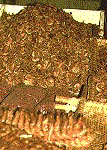
Shellfish:
Covers all aquatic animals that have a shell of some kind
Divided into crustaceans (crabs, crayfish, lobster, shrimp) and
mollusks' --gastropods (abalone, snails), bivalves (clams, oysters),
and cephalopods (octopus, squid)
Eggs:

Long-held symbol of fertility and an object of both pagan and
religious rites of worship
Most commonly refers to hen' s eggs but other types are also
eaten -quail, duck, goose, etc.
Development of poultry farming and breeding techniques has increased
availability
Eaten as a food item in itself as well as important building
block for other dishes such as baked goods, soufflés,
dressings; also as thickener in sauces and custards, clarifying
agent for stocks, and coating for battered and breaded foods.
Custard Egg based - Both savory and sweet - Either baked or stovetop,
require careful prep to prevent curdling to insure texture and
flavor
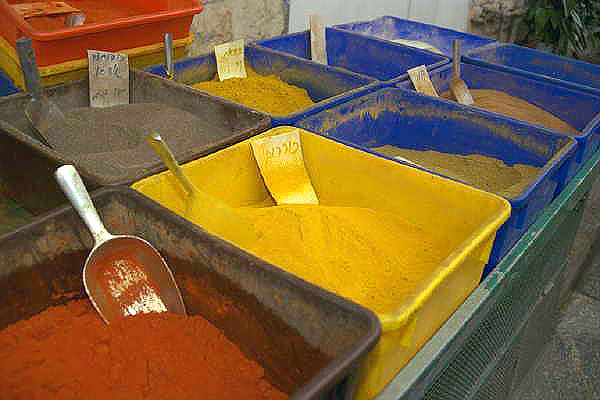 Spice
Blends:
Spice
Blends:
Spices are pungent or aromatic seasonings obtained from the bark,
buds, fruit, roots" seeds or stems of various plants and
trees
Spices have very ancient roots, used for thousands of years throughout
Asia, Middle East and Mediterranean region
Once valued as highly as gold, the quest for spices has had major
historical impacts - countries went to war to win control over
their production, explorers set out to
Discover new passages to the East, often paving the way to unexpected
places (like the Americas!) in the process, etc. etc.
Spice blends are used in many parts of the world to add a distinctive
flavor to a dish - vary widely in intensity and flavor
Far Eastern -Japan, China, Thailand, Indonesia, India- e.g. Chinese
5 spice powder, assorted curry mixtures
African and Middle Eastern --e.g. zhug from Yemen, harissa from
Tunisia, berbere from Ethiopia
European -not as popular as in other areas but there are some
e.g. "quatre-spices" (4 spice blend) from France, pickling
spice blends from Britain
American -e.g. Cajun blends, barbecue spice mixtures
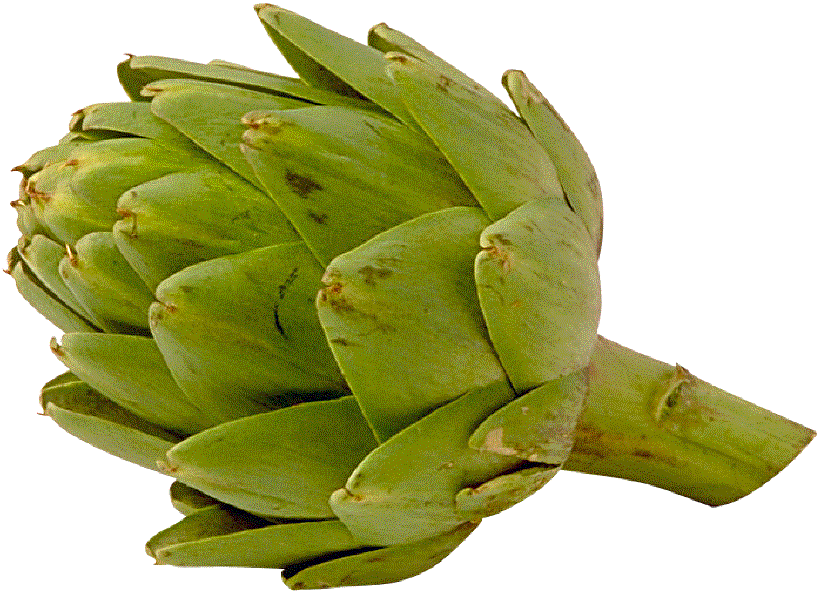 Vegetarian
Vegetarian
Vegetarian diets have been around for ages and in many cultures
-sometimes based in religious, philosophical, or ethical reasons,
other times for health, economic, or availability reasons (or
some combination)
Evidence in ancient Eastern cultures, often stemming from philosophical/religious
beliefs- Buddhism advocates a vegetarian diet and spread through
much of Asia
Also roots in Hinduism in India, evidence from Egyptian mummies
of consumption of a vegetarian diet
Vegetarian "movement" has roots in ancient Greece -began
as religious and transformed into belief that vegetarianism was
crucial to healthy living.
The
Roman Empire was also probably largely vegetarian,
then
fell out of
favor for a thousand years or so after the fall of the Roman
Empire
British vegetarian Reverend William Metcalf carried the movement
to America in 1817
Due to food shortages in WWI, scientists explored alternative
sources of protein found through non-meat sources leading to
further increases in vegetarianism
 Wraps
Wraps
Found in many cuisine's -everything from eggrolls to burritos,
crepes, pita sandwiches
Recent trend but have been around for a very long time.
 |
Smoking 
Method of curing food as means to preserve it- improves flavor,
aroma, color, and texture
."cold" smoking --very low temps to prevent cooking
."hot" smoking -higher temps to cook as well as smoke
Flavors come both from materials /method (e.g. type of wood or
process) and spice seasoning treatment of the meat
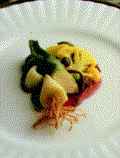
Salad 
As many variations as there are vegetables and creativity!
Americans often eat salad as 1st course; it comes near the end
of a meal in France many classic salads have origins of necessity
-items that were on hand were put together and when people took
a liking, the combination spread ( e.g. Cobb Salad, Caesar salad)